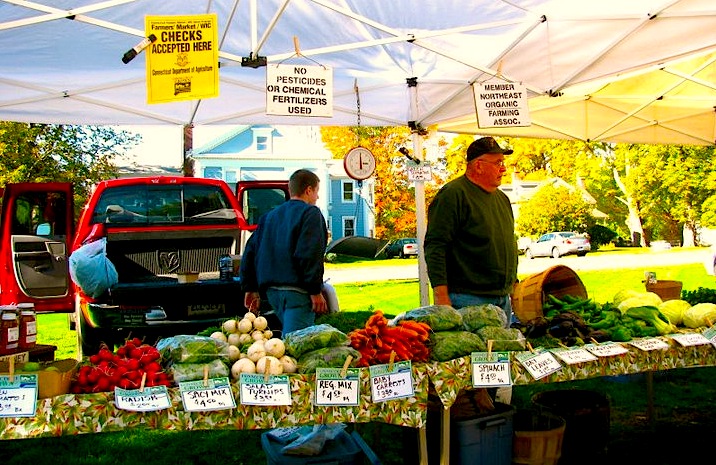 Buying food locally has a number of advantages for a community, from the added health benefits to boosting the local economy. For one, getting food from local sources cuts down on the need to ship food long distances, which decreases the use of fuel. The average food item sold in a supermarket travels more 1,500 miles from a farm to the kitchen. As a result, fruits and vegetables in grocery stores are picked up to a week before they reach markets. Local foods thus have less spoilage, lose fewer nutrients and are more flavorful.
Buying food locally has a number of advantages for a community, from the added health benefits to boosting the local economy. For one, getting food from local sources cuts down on the need to ship food long distances, which decreases the use of fuel. The average food item sold in a supermarket travels more 1,500 miles from a farm to the kitchen. As a result, fruits and vegetables in grocery stores are picked up to a week before they reach markets. Local foods thus have less spoilage, lose fewer nutrients and are more flavorful.
A thriving local food market also encourages more consumption of organic foods, reducing the reliance on artificial fertilizers and pesticides. Buying local, organic food straight from the farm gives concerned consumers the confidence that what they eat is not pesticide-laden or genetically modified (GM); Connecticut legislature failed to pass a state law to label GM foods earlier this year.
Buying locally helps create local jobs, preserve open space and support family farms. According to GOOD, in 2011 the USDA Economic Research Service issued a report in its Food Dollar series that showed a typical farmer receives approximately 16 cents per food dollar spent. Eighty-four cents pays for food marketing, which includes transportation, processing and distribution. When consumers buy food directly from farmers, removing the middlemen, farmers receive 80 cents to full value per food dollar.
Buying local food also encourages the development of local food processing and distribution networks, while encouraging strong community connections between people and the food producers and farmers providing fresh, local food.
In June of this year, the Strolling of Heifers Locavore Index was released, ranking Connecticut 29th in the United States. The Locavore Index rates states’ commitment to locally sourced foods by measuring the per-capita presence of CSA programs and farmers markets, indicators of the availability and demand for locally produced food. The ranking system is based primarily on United Sates Department of Agriculture (USDA) and U.S. Census data from 2010 and 2011.
“Locavorism is on the rise everywhere,” said Orly Munzing, founder and executive director of Strolling of the Heifers. “Our research shows that CSAs and farmers markets…are becoming more numerous every day in every state.”
Community-Supported Agriculture (CSA) programs have become an increasingly popular way for consumers to get direct access to local, seasonal food from farmers. Essentially, customers purchase a share of the season’s harvest in advance. CSA farmers get revenue in advance to cover costs of tilling, soil preparation and seed. The CSA member or subscriber then receives a box of seasonal produce weekly throughout the growing season, which can last up to six months in this region.
Some CSA shares offer the basics in produce, such as tomatoes, corn, cucumbers and zucchini. Others, like Wild Carrot Farm in Canton, serve a myriad of less familiar crops, like celeriac, husk cherries, kohlrabi and garlic scapes. Other products like honey, jam, flowers, baked goods and soap are available at many farms.
Not knowing exactly what will appear in a share each week can be part of the fun. Several members expressed how much they enjoyed learning how to identify new vegetables—sometimes sharing photos of foreign produce with more knowledgeable friends—and then discovering different ways to prepare them.
For those who find themselves with too many leftover vegetables at the end of the week, a CSA may offer half-shares or members can split a share with another person, or even a local food bank or soup kitchen. The National Center for Home Preservation also offers instructions for freezing, canning and fermenting a various vegetables, fruits and animal products.
Click here to read more about Conn.-area CSAs.
Leave a Reply